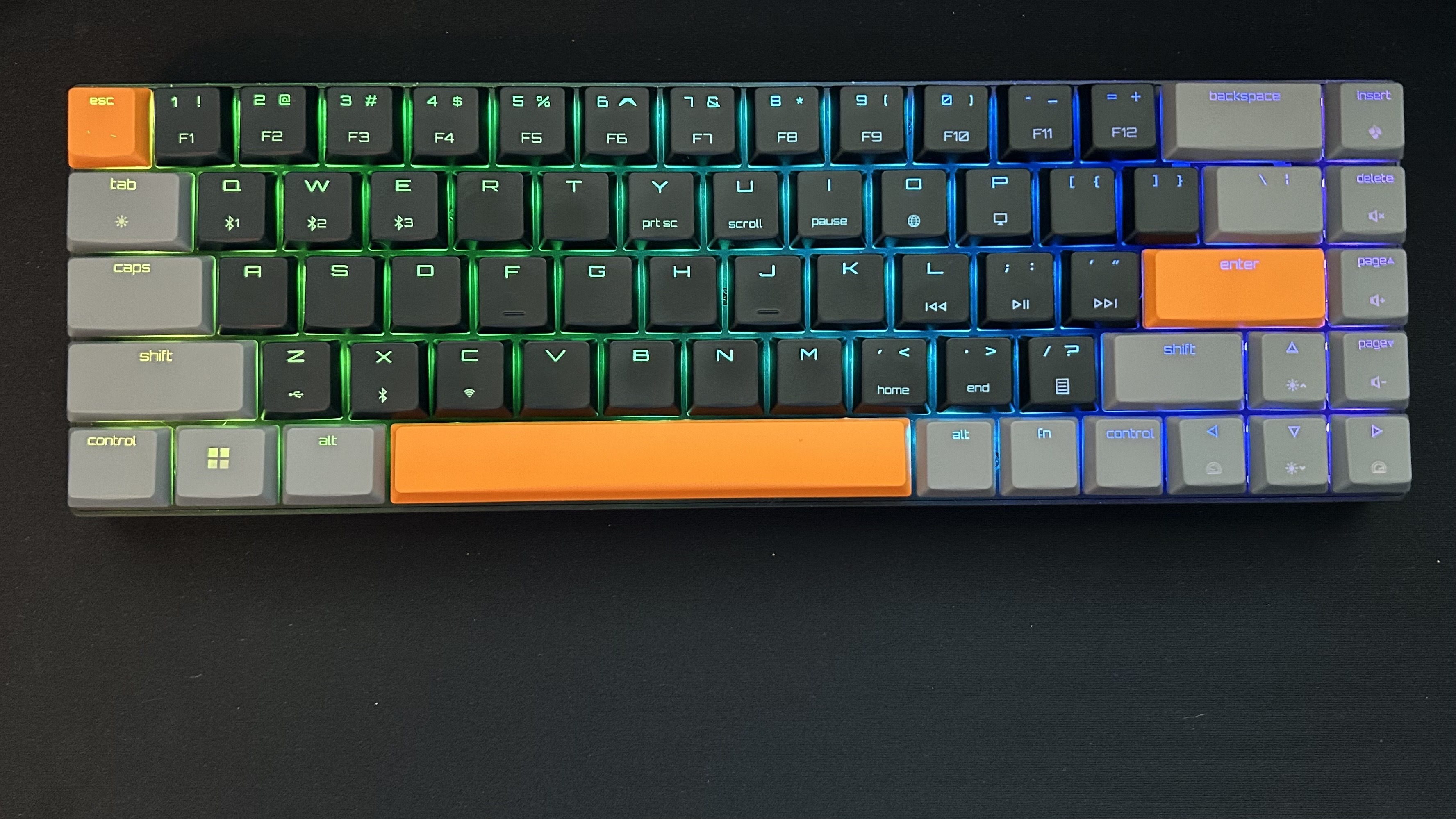
The low-profile Cherry MX-LP 2.1 comes as part of a trio of gaming keyboard releases from the switch manufacturer, following a merger with gaming brand Xtrfy last year. These are the first decks to come out of this acquisition, and with Cherry's prominence in the switch space high hopes are in place.
The super lightweight 65% deck is certainly bringing something new to the world of the best gaming keyboards, a featherlight 423g weight and compact design makes for a particularly portable device. At $129.99 / £139.99 it's also got some stiff competition. I put the diddly deck to the test over the course of two weeks to see just how well that smaller form factor holds up for work and play.
Design
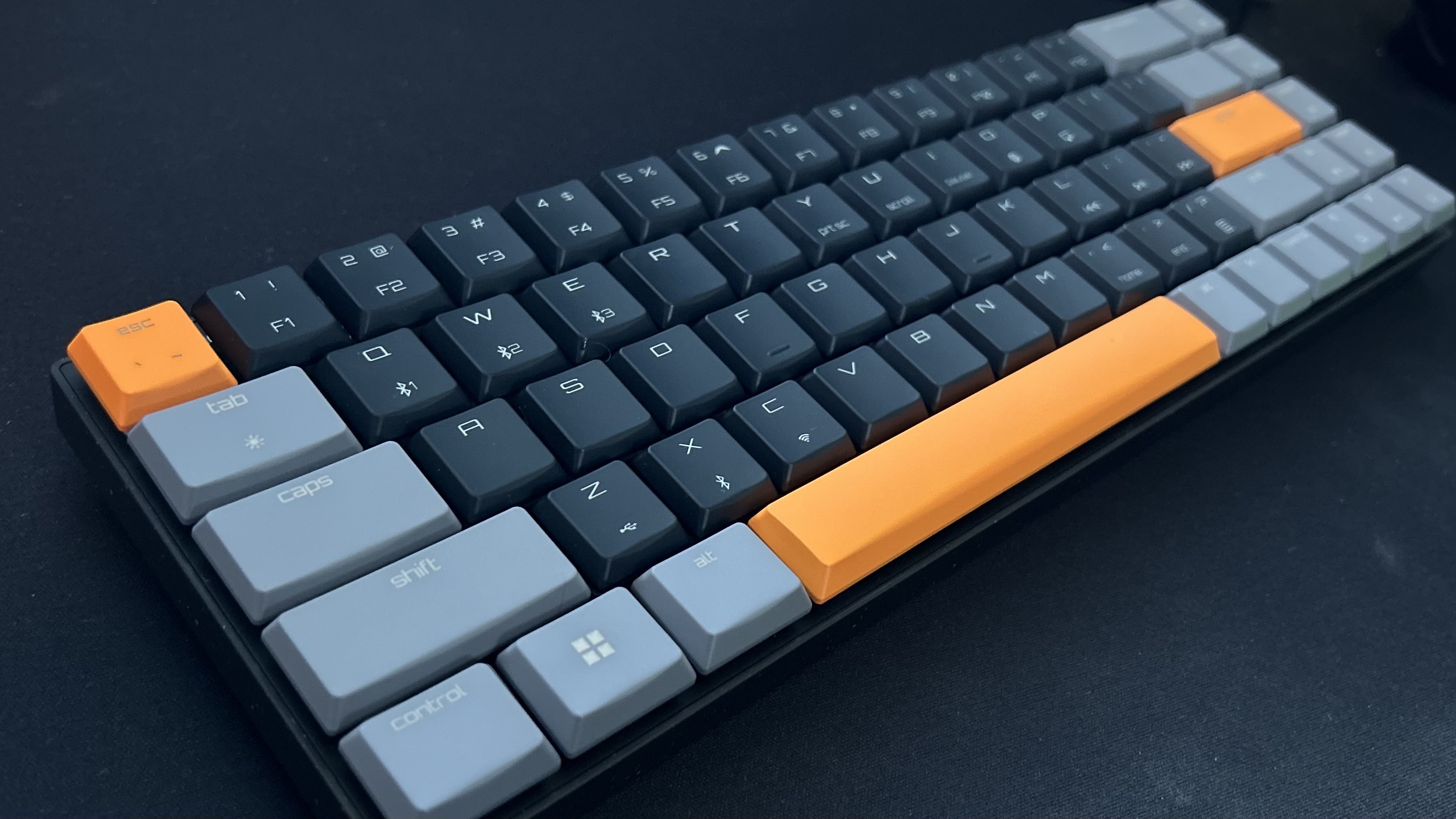
If you regularly travel with your kit (or you'd like to start doing so), you'll definitely want to take a look at the Cherry MX-LP 2.1. I was shocked at just how light it felt in-hand after taking it out the box, and throwing it in a backpack feels like second nature. That's largely down to the smaller footprint and full plastic chassis design. While you're dropping the more premium feel of an aluminium metal case, everything still feels particularly solid here. This is a very well put together keyboard, from the sturdy shell to the lack of any real flex under the fingertips. I would feel more than confident in transporting these keys in a full backpack.
A super skinny bezel design keeps everything feeling particularly tight, alongside those low profile keys themselves. That means those after a minimalist aesthetic will find the MX-LP 2.1 particularly pleasing as well. I certainly enjoyed the extra desk space, even after transitioning from a still-small Asus ROG Azoth for testing.
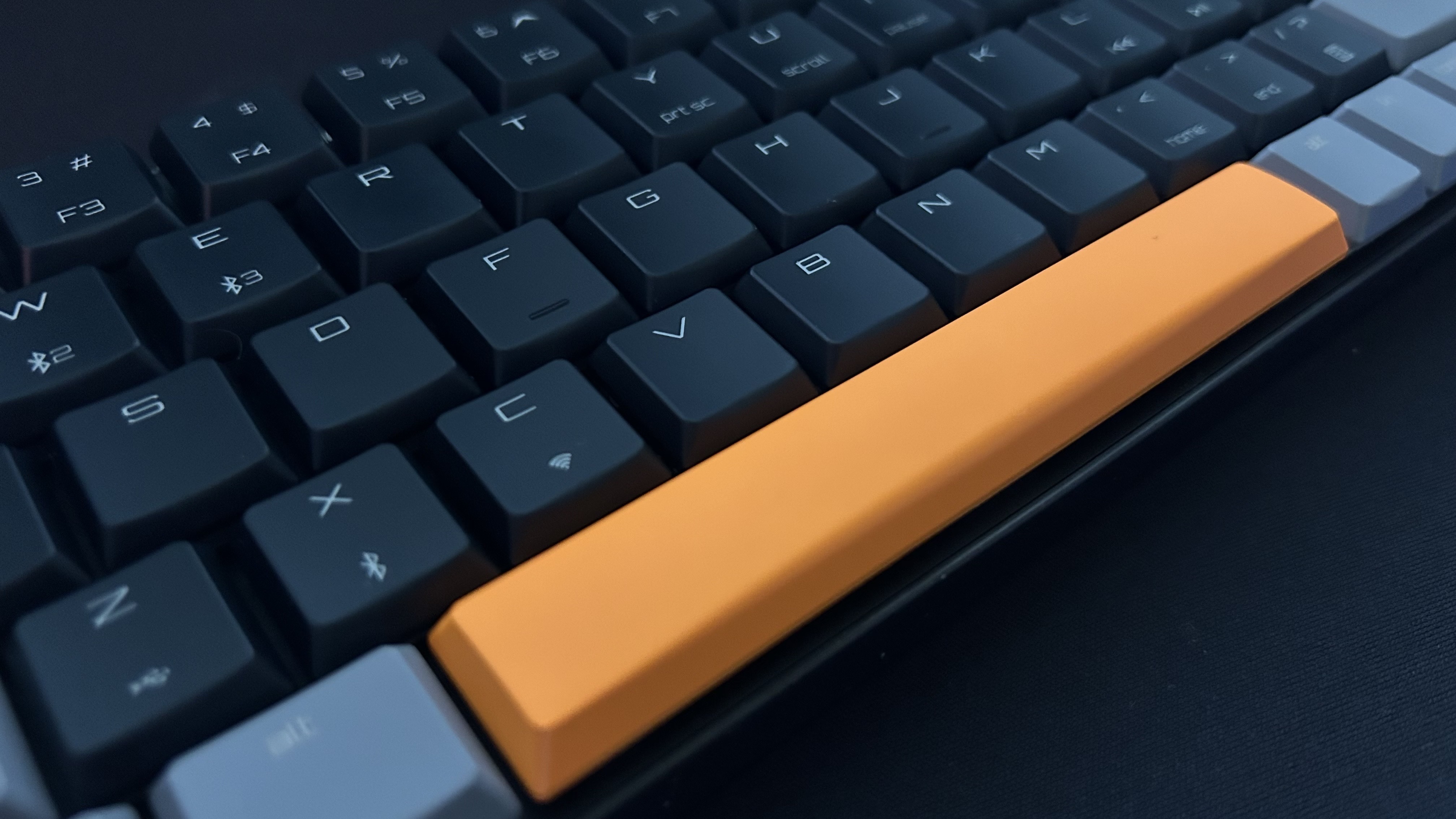
My test unit comes with a black main body and black, orange, and gray keys, but you'll also find a white / blue / red colorway and khaki / pink / white on the shelves - though the latter is a little harder to find. The colors on this unit are particularly crisp, though, that orange has a clean vibrancy to it that truly pops against the cool gray and matte black. That slick design is helped along by particularly skinny legends on each keycap, shining that bright LED through translucent ABS plastic. It would have been nice to see PBT keycaps on here considering the price point, but these are far from cheap feeling. In fact, while I traditionally prefer a grippier texture, I found the soft matte finish a joy to use. There was never any slipping across the deck itself and I was free to glide across the deck as quickly as I could.

You'll find the USB-C port and power button along the top, sitting on a speckled design. I struggled to like this dotted aesthetic. There's something about the spacing and non-uniform shapes of the specks that just looks like dust from further away, and even when first inspecting the deck itself.
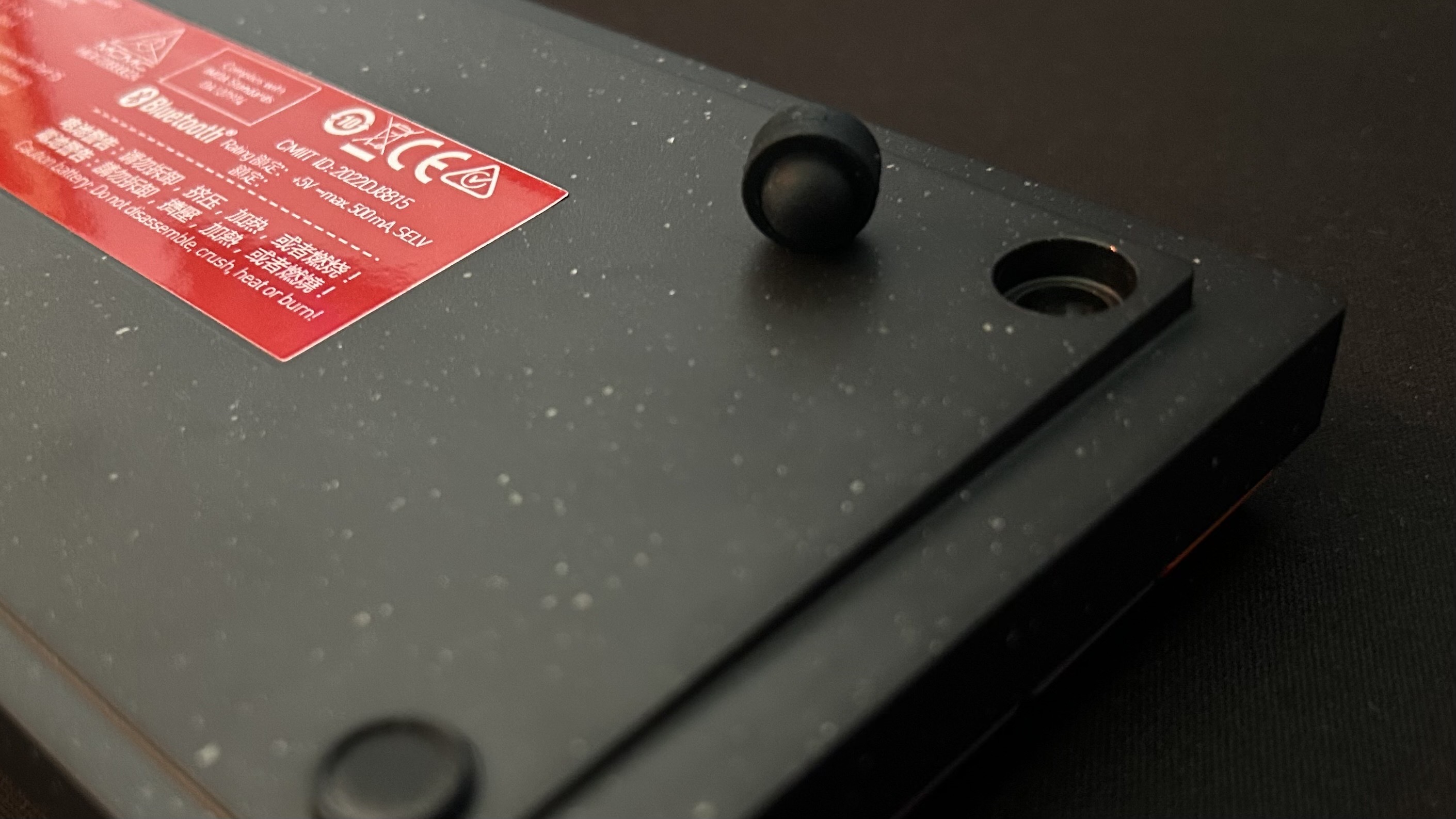
Around the back, though, you'll find an ingenious solution to adding extra elevation while keeping those dimensions down. The rubber feet at the top of the keyboard actually pop out of their housing, and can be flipped to provide a slightly taller rear section. Even with that extra height, this is still a particularly flat typing experience that doesn't offer the ergonomic support you'll find in the majority of gaming keyboards on the market. That meant I was feeling the fatigue a little after just a couple of hours of typing at a desk, even with those lighter low profile switches.
Features
The Cherry MX-LP 2.1 comes with the brand's Low Profile Speed switches under the hood, offering a 45g actuation force and super slick 1mm pre-travel distance. That's a speedy set of clickers, especially considering the effortless low profile keycap design. LED fans will be pleased to learn that RGB lighting remains a constant in this gaming space - the LP 2.1 manages to pack a surprisingly fluid RGB system. It's vibrant but certainly not in your face and provides a subtle glow rather than an assault on the senses. Of course, each key's lighting is programmable via Cherry's desktop software.
This is also where you'll be able to set custom keybindings and create macros for certain keys as well. The whole software is lean, and could do with some polishing, but is quick and simple for surface level adjustments. You'll find far more personalization options from more established gaming brands like Razer or Corsair, but there's enough here to satisfy the basics.
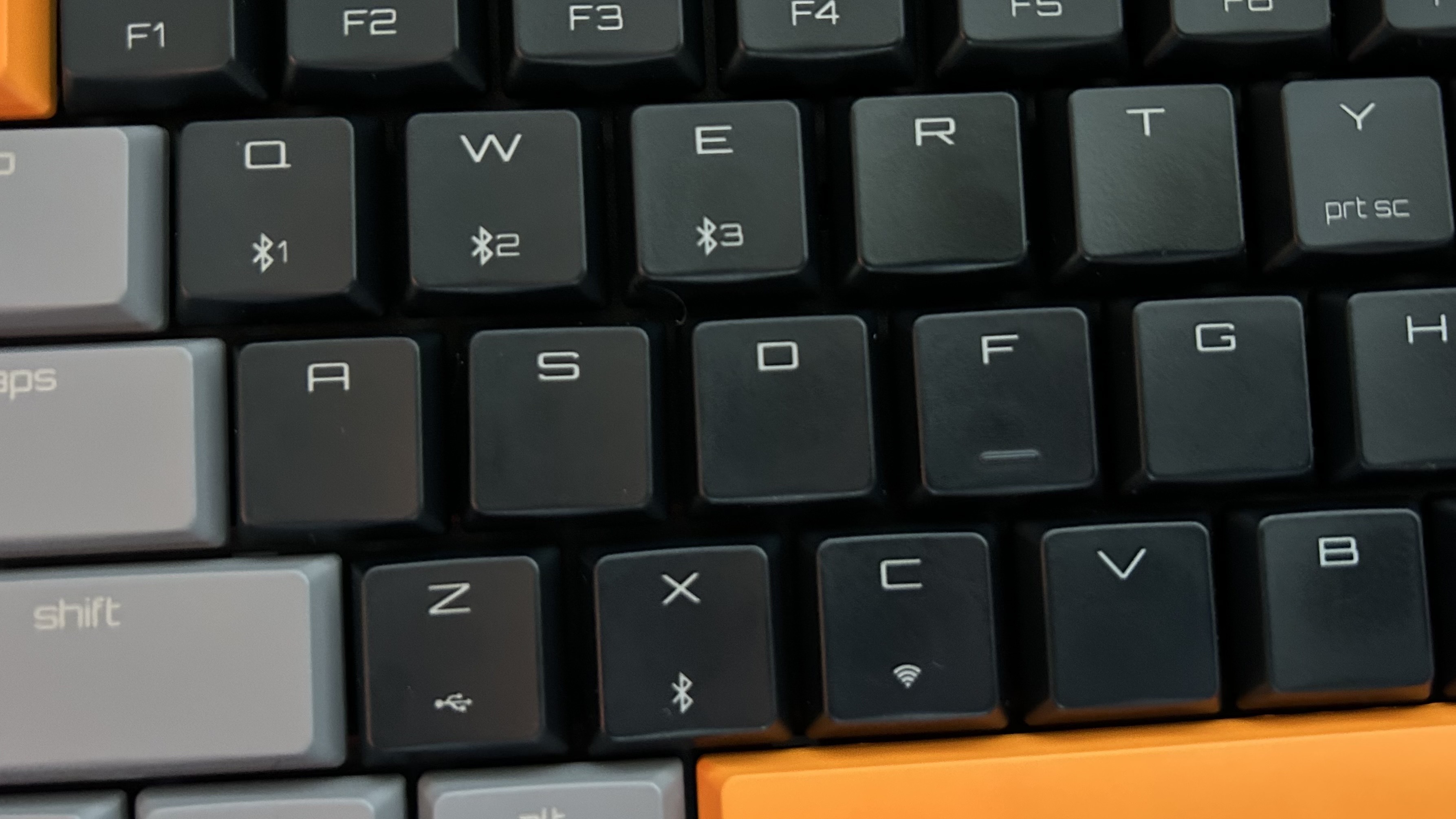
You're not stuck for connection options, though. The Cherry MX-LP 2.1 can be used over the included 2.4GHz dongle, a USB-C cable, or Bluetooth. Rather than adding an extra Bluetooth pairing button or toggle here, though, the setup process is included in the second layer of main key functions. Hitting Fn and X will kick off pairing, with three channels to choose from (and assigned to the QWE keys). That means you can keep up to three devices connected, without having to re-pair every time.
That smaller 65% form factor means you are dropping several additional functions, as well as dedicated media controls. That's the norm for this size keyboard, and the Cherry MX-LP 2.1 manages to keep everything easily reachable in its second layer of functionality. That's endlessly helped by the dedicated arrow keys that continue to keep the 65% design above the 60.
Performance
Despite its lower chassis height (as is expected from a low profile keyboard), the MX-LP 2.1 does offer up a particularly fluid typing experience. Everything is speedy here, with just the right level of resistance behind each cap click. Each key is stabilized to within an inch of its life, keeping everything where it should be with no reverb or wobbly keys. On top of that, the super speedy bounceback ensures an almost floating movement over the main deck, springing you towards the next key particularly quickly.
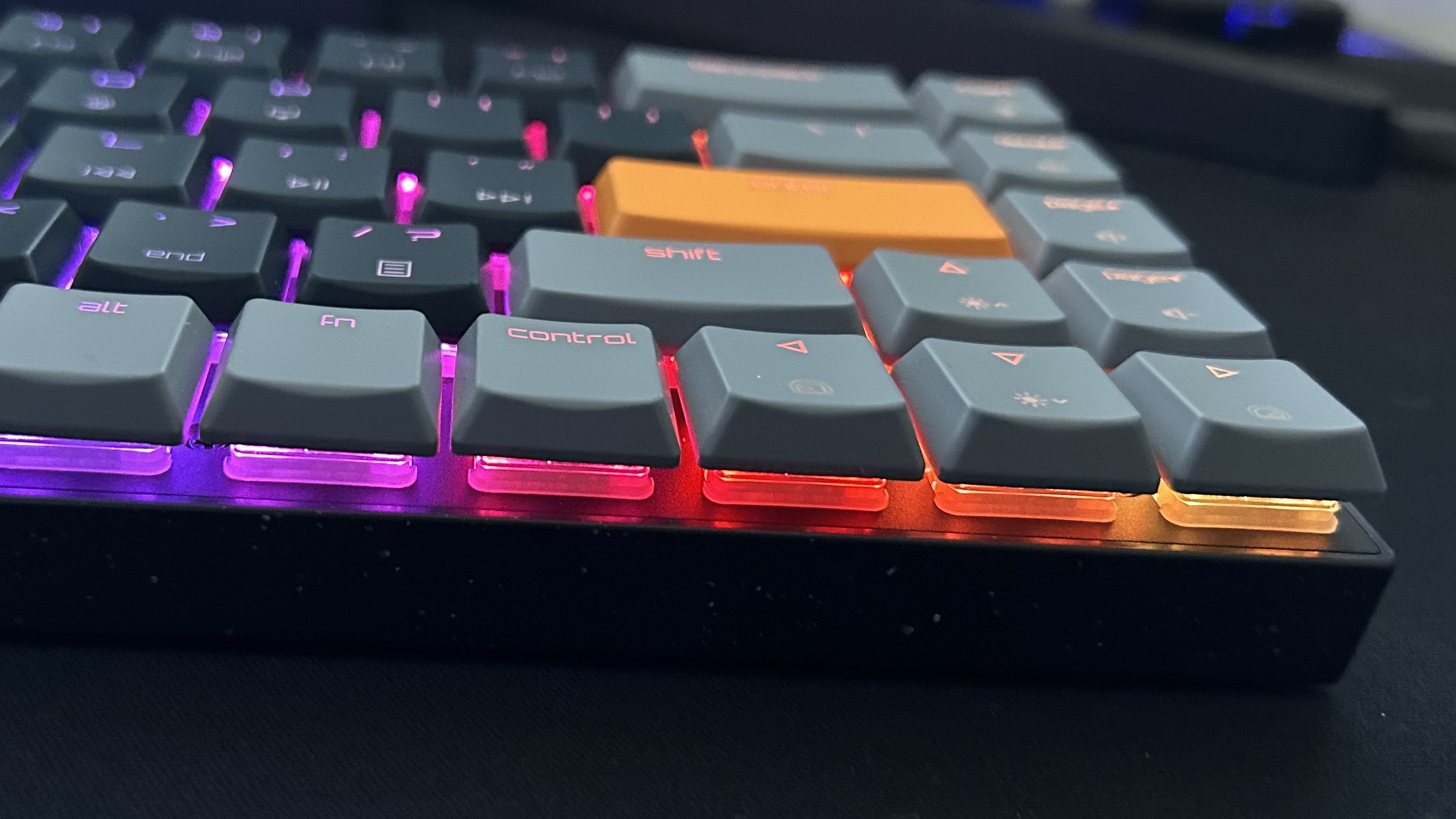
Across typing tests, I achieved an average of 97WPM, with an accuracy of 96%. That's slightly faster than the 92WPM average I scored on my daily driver, the Asus ROG Azoth, in same-day tests, though accuracy did drop from 97% to 96%. That's about as fast as I'm going to type, so there's nothing holding you back here.
Those soft keycaps, even softer landing feel, and snappy switches make for a particularly smooth gaming experience as well. The compact size meant I was able to keep full control even during more hectic Alan Wake chases and held up nicely across more inventory-heavy Elder Scrolls Online sessions. The speed of the switches was supported by amply sized keys, so accidental presses were exceedingly rare - and of course there's still N-key rollover and anti-ghosting to keep things accurate as well.
Should you buy the Cherry MX-LP 2.1?
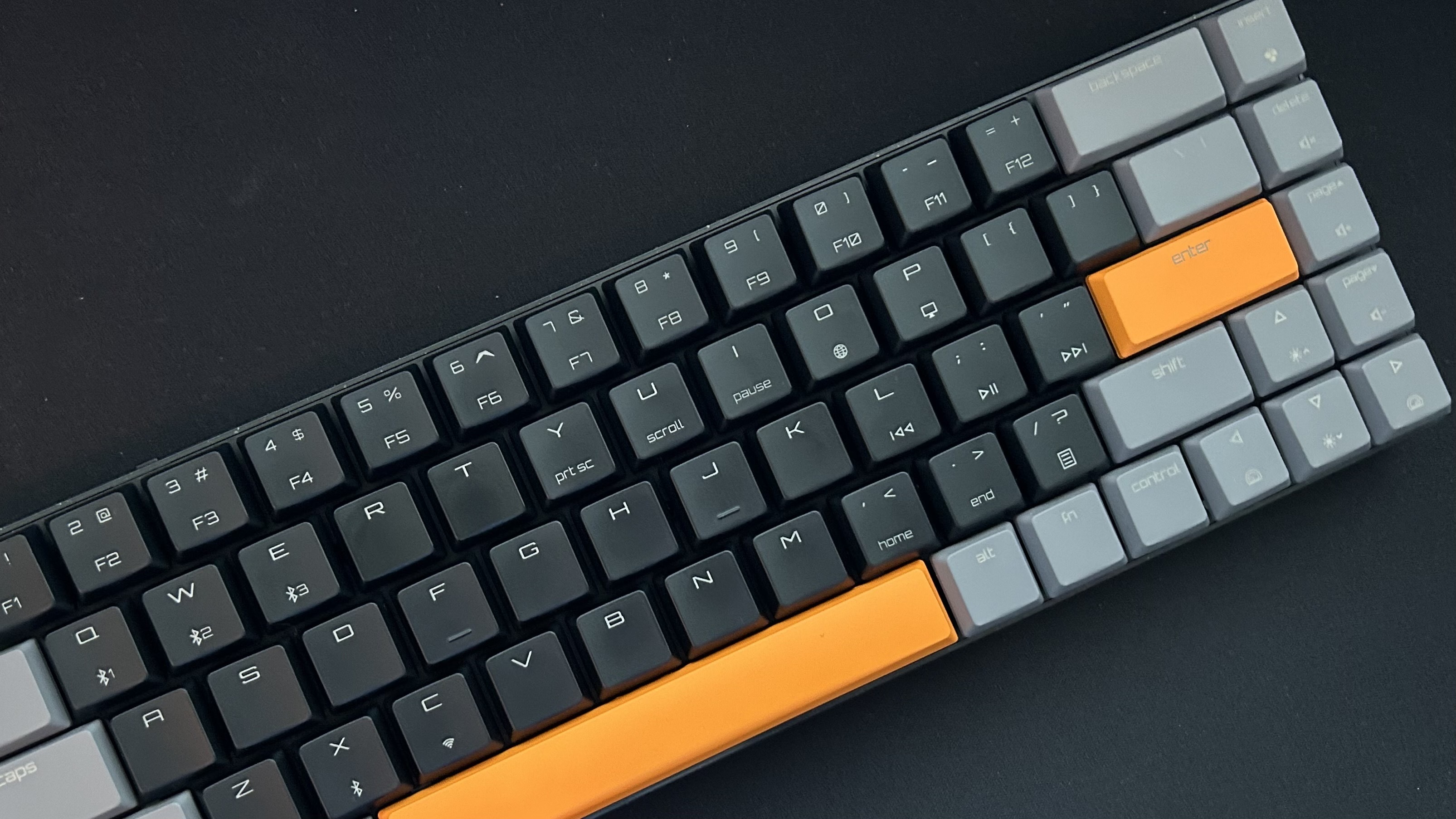
The Cherry MX-LP 2.1 is an interesting proposition, but for all its speed it's not one I'd recommend to the majority of players. For those after an endlessly portable device, though - it's the best in the business.
These more compact 65% keyboards are perfect for streamlined competitive players, but for genre generalists (and those looking for more of a control panel style setup), more keys are really necessary. That's by no means the fault of Cherry's keyboard, but the lack of dedicated media controls and the reliance on dual-function keys is always going to be a sacrifice in this form factor.
If you are looking for a portable, compact gaming keyboard, though, there's very little out there that can compete. This is by far the lightest wireless gaming keyboard I've had my hands on, and it's a go-to for anyone who travels to play or work. It's also an excellent option if you're specifically looking for a low profile deck. There's a super satisfying feel to these keys considering their shorter height, with a smooth type feel and fast response.
However, if you're not tied to that shorter form factor, there are other options on the market that can offer better value overall. The HyperX Alloy Origins 65, for example, doesn't quite carry the same uber portable shape, but can still be thrown in a backpack easily - and I loved the grippy PBT keycaps. It's a wired-only affair, but with a detachable cable, and a slightly cheaper $99.99 / £99.99 price point. There's still plenty of speed under the hood here as well.
Anyone looking to splash a little extra cash should be looking at the Corsair K70 Pro Mini, though. The hot-swappable keyboard does drop a few keys, measuring in at a 60% form factor, but with up to 50 onboard profiles and a particularly comfortable design it's certainly one for power-users.
How we tested the Cherry MX-LP 2.1
I used the Cherry MX-LP 2.1 for two weeks, testing alongside the Asus ROG Azoth and Cherry MX 8.2 during that time. I primarily played Alan Wake: Remastered and Elder Scrolls Online, with a healthy dose of CS:GO and Doom Eternal thrown in as well. I also used the keyboard for the vast majority of daily work during this time, both at home and away. For more information on how we test gaming keyboards, check out the full GamesRadar+ Hardware Policy.
We're also helping you find the best membrane gaming keyboard if you're after something a little cheaper, but we're also rounding up the best Razer keyboards and the best gaming mouse models to finish up your setup as well.







